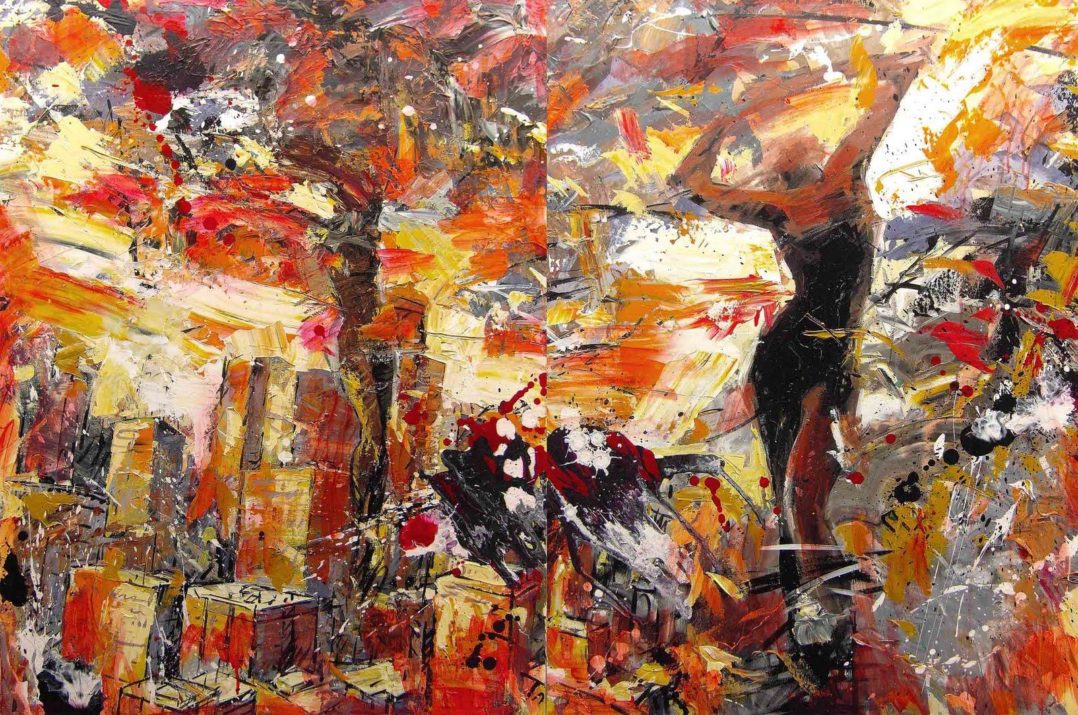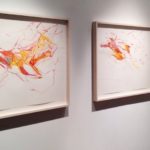To many people, coming up with a contemporary art definition can be a troublesome task. While its title is simplistic and straightforward, its modern-day meaning is not as clear-cut. Fortunately, understanding what constitutes as “contemporary” is entirely possible once one traces the concept’s history and explores its underlying themes.India is the world’s largest democracy, home to a “transitional society” that by many accounts is the most diverse on earth. Contemporary Indian art matches the cultural and ideological diversity of the nation, and thanks to rapid globalization are becoming increasingly visible in the international art world.

The spellbound Nahargarh Fort
Basking in the glory of Rajput history, the iconic Nahargarh fort in Jaipur has always remained a favourite among tourists. Built by Maharaja Sawai Jai Singh II in 1734, the fort overlooks the Pink City. And now, it is also home to a sculpture park. Before Jaipur was made the capital of Rajasthan, the majestic city of Amer stood tall as the capital of the Rajput. The city was bustling with activity and markets in the 1600s. Nahargarh fort along with Amer Fort and Jaigarh Fort had formed the defence to the then capital. Nahargarh is located along the Aravalli hills overlooking a beautiful lake. There is a food court and a restaurant at the top of the fort with an excellent view, Padao. The fort now also is home to the Jaipur wax museum and glass palace.

Artwork on disaly at the Nahargarh Fort
Nahargarh mean ‘abode of tigers’. Legend says that the fort was named as Nahargarh after the spirt of a Rathore, Nahar Singh. When the construction of the fort started strange phenomenon occurred. Every morning the workers would find the previous day’s work destroyed. This is when the then Maharaja, Jai Singh discovered the land was haunted. They constructed a shrine in which the spirit could reside and named the fort Nahargarh.
The sculpture park at Madhavendra Palace in Nahargarh Fort has turned into a hub of contemporary art where 15 Indian artists and 9 international artists have presented their collections. The park, which opened its doors on December 10, is a public-private collaboration between the Rajasthan government and the not-for-profit Saat Saath Arts.
Acclaimed curator Peter Nagy, who is the brain behind this concept, said it was a challenge for him to give a twist in the appearance of the fort but without hampering its surface. Maintaining the art was difficult. Some of the works are even kept in the open and there is a risk of it being damaged by natural calamities as well as visitors.
But there is a great scope of contemporary art in India which is gradually spreading its roots according to him. And For most of his career as a gallerist and curator, he has been trying to break away from the white-box exhibition space concept. With this project, he was able to indulge his passion for art, architecture and decor into a marvellous synthesis of the past and present.

Indian artwork on display by Jitish kallat at the Nahargarh Fort
For artist Jitish Kallat, whose works Annexation and Vertical Chronicle of a Turbulent Equilibrium are being showcased in the sculpture park, there were no second thoughts when he was approached because he found the concept to be a fresh one. Contemporary art needs to be in an environment which is devoid of content. When you see work against the backdrop of a really majestic architectural and historical structure, it only adds more dimension to the meaning.
Artist Ravinder Reddy, who has taken up the contemporary issue of migration, believes there couldn’t have been a better place for his art than a heritage site. Reddy’s Migrant is a reflection of unacknowledged heroes, those who raise children, run homes, and keep families together. With Migrant, he commemorates women who are extremely pertinent in the world of 2017: the refugee who is forced to move from one location to another, often with her children and all she owns are on her head and back. “We are always creating history. In that context, I feel the sculpture is relevant because you are associating with an old structure and, at the same time, looking forward at the present. This is perhaps one of the best ways to engage with past and present at the same time,” said Reddy.

Artist Ravinder Reddy who has displayed at the fort
While curator Nagy expressed concern about the preservation of the sculptures, artists Thukral and Tagra voiced just the opposite. They wanted their piece of art to be touched by all. Titled Memorial – a & b (wings), the work recreates the imagery which came as a sequence of images in a dream. “This reflects our desires which cannot be fulfilled, which are so heavy that they cannot be lifted. We want the visitors to touch it and relate it with their own buried desires,” said Thukral.
Another astonishing part of the Fort is the abode of tigers which has an amazing view. Earlier it was a lonely place with magnificent structures and a few places to eat. But now the fort is bustling with noise due to the recent opening of the glass palace and wax museum. The wax museum has many well-known personalities including the likes of Amitabh Bachchan. The museum along with the lifelike replica of many national heroes also has detailed backdrops and well-designed sets.

Contemporary art pertaining to jaipur on display
The Sheesh Mahal where some of the contemporary artworks have been placed was designed to honor the Mughal and Rajput architecture. The significance of this glass palace is that the entire room is made from hand cut glass. Sheesh Mahal in other parts of Rajasthan does not have a glass floor. This is what makes this a unique place to visit.



cheap silicone wristbands
January 14, 2018Very soon this website will be famous among all blog users, due to it’s fastidious articles